 W
WPétroleuses were, according to popular rumours at the time, female supporters of the Paris Commune, accused of burning down much of Paris during the last days of the Commune in May 1871. During May, when Paris was being recaptured by loyalist Versaillais troops, rumours circulated that lower-class women were committing arson against private property and public buildings, using bottles full of petroleum or paraffin which they threw into cellar windows, in a deliberate act of spite against the government. Many Parisian buildings, including the Hôtel de Ville the Tuileries Palace, the Palais de Justice and many other government buildings were in fact set afire by the soldiers of the Commune during the last days of the Commune, prompting the press and Parisian public opinion to blame the pétroleuses.
 W
WBlanche of Castile was Queen consort of France by marriage to Louis VIII. She acted as regent twice during the reign of her son, Louis IX: during his minority from 1226 until 1234, and during his absence from 1248 until 1252. She was born in Palencia, Spain, 1188, the third daughter of Alfonso VIII, King of Castile, and Eleanor of England.
 W
WRenée Bordereau, nicknamed The Angevin, was a French woman who followed her father, disguised herself as a man, and fought as a Royalist cavalier in the troops of Charles Melchior Artus de Bonchamps during the Vendéan insurrection against the French Revolution and took part in all battles of the war.
 W
WGeneviève de Brunelle, Marquise de Combray (1742–1823), was a French counter-revolutionary and royalist during the French Revolution and the first empire.
 W
WCéleste Bulkeley (1759–1832) was a French soldier in the Catholic and Royal Army during the war in the Vendée. She was one of at least six women known as the amazons in the army of François de Charette. She is particularly known, being included as a heroine in many school books during the 19th century.
 W
WThe Siege of Nice occurred in 1543 and was part of the Italian War of 1542–46 in which Francis I and Suleiman the Magnificent collaborated as part of the Franco-Ottoman alliance against the Holy Roman Emperor Charles V, and Henry VIII of England. At that time, Nice was under the control of Charles III, Duke of Savoy, an ally of Charles V. This is part of the 1543–1544 Mediterranean campaign of Barbarossa.
 W
WFrançoise de Cezelly was a French war hero during the French Wars of Religion. She distinguished herself when the village of Leucate was besieged by Spanish forces allied with the Catholic League in 1590, after her husband, the governor, was captured and executed by the enemy.
 W
WJeanne d'Albret, also known as Jeanne III, was the queen regnant of Navarre from 1555 to 1572. She married Antoine de Bourbon, Duke of Vendôme, becoming the Duchess of Vendôme and was the mother of Henri de Bourbon, who became King Henry III of Navarre and IV of France, the first Bourbon king of France.
 W
WMarguerite Catherine Ponsoye Delaye, also known as Margot Delaye or La Gandonne, was a woman who fought during the siege of Montelimar by Admiral Coligny in April 1570, during which she lost an arm. This battle was part of the French Wars of Religion. A one-armed statue was erected in her honor.
 W
WMarie-Thérèse Figueur, known by the nom de guerre Sans-Gêne, was a French heroine who fought in the French Revolutionary Wars and Napoleonic Wars. In contrast with most female soldiers before the twentieth century, she did not disguise her gender when she enlisted, serving for twenty-two years under her own name in the French Revolutionary Army and the Grande Armée.
 W
WGenevieve, is the patron saint of Paris in the Roman Catholic and Eastern Orthodox traditions. Her feast day is kept on 3 January.
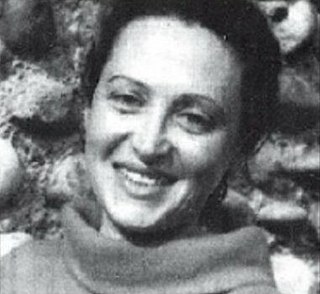 W
WJacqueline Netter-Minne-Guerroudj was a Frenchwoman condemned to death as an accomplice of Fernand Iveton during the Algerian War. She was never executed, partly due to a campaign on her behalf conducted by Simone de Beauvoir.
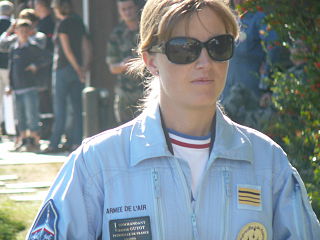 W
WCommandant Virginie Guyot is a fighter pilot of the Armée de l'Air who achieved an historical first when she was appointed leader of the Patrouille de France, becoming the first woman in the world to command a precision aerobatic demonstration team.
 W
WJeanne Laisné was a French heroine known as Jeanne Fourquet and nicknamed Jeanne Hachette. She was the daughter of a peasant.
 W
WIsabella of Aragon, was Queen of France from 1270 to 1271 by marriage to Philip III of France.
 W
WIsabella of France, sometimes described as the She-Wolf of France, was Queen of England as the wife of Edward II, and regent of England from 1327 until 1330. She was the youngest surviving child and only surviving daughter of Philip IV of France and Joan I of Navarre. Isabella was notable in her lifetime for her diplomatic skills, intelligence, and beauty. She became a "femme fatale" figure in plays and literature over the years, usually portrayed as a beautiful but cruel and manipulative figure.
 W
WJoan I was queen regnant of Navarre and countess regnant of Champagne from 1274 until 1305; she was also queen consort of France by marriage to Philip IV of France. She was the daughter of king Henry I of Navarre and Blanche of Artois.
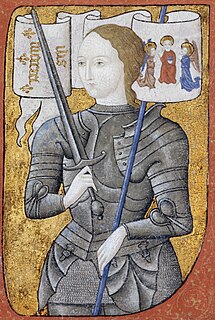 W
WJoan of Arc, nicknamed "The Maid of Orléans", is considered a heroine of France for her role during the Lancastrian phase of the Hundred Years' War, and was canonized as a Catholic saint. She was born to Jacques d'Arc and Isabelle Romée, a peasant family, at Domrémy in the Vosges of northeast France. Joan claimed to have received visions of the archangel Michael, Saint Margaret, and Saint Catherine of Alexandria instructing her to support Charles VII and recover France from English domination late in the Hundred Years' War. The as-yet-unanointed King Charles VII sent Joan to the Siege of Orléans as part of a relief army. She gained prominence after the siege was lifted only nine days later. Several additional swift victories led to Charles VII's consecration at Reims. This long-awaited event boosted French morale and paved the way for the final French victory at Castillon in 1453.
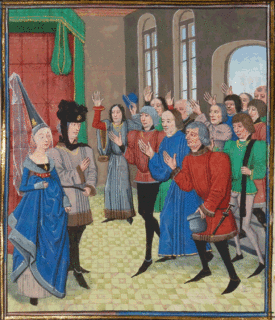 W
WJoanna of Flanders was Duchess of Brittany by her marriage to John of Montfort. Much of her life was taken up in defence of the rights of her husband and, later, son to the dukedom, which was challenged by the House of Blois during the War of the Breton Succession. Known for her fiery personality, Joanna led the Montfortist cause after her husband had been captured, and began the fight-back, showing considerable skill as a military leader.
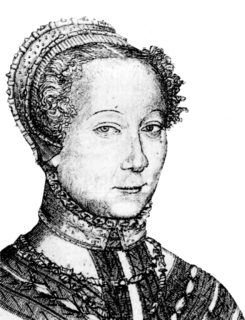 W
WLouise Charlin Perrin Labé,, also identified as La Belle Cordière, was a feminist French poet of the Renaissance born in Lyon, the daughter of wealthy ropemaker Pierre Charly and his second wife, Etiennette Roybet.
 W
WIsabella was suo jure Duchess of Lorraine, from 25 January 1431 to her death in 1453. She was also Queen of Naples by marriage to René of Anjou. Isabella ruled the Kingdom of Naples and her husband's domains in France as regent during his imprisonment in Burgundy in 1435-1438.
 W
WMargaret of Anjou was the Queen of England and nominally Queen of France by marriage to King Henry VI from 1445 to 1461 and again from 1470 to 1471. Born in the Duchy of Lorraine into the House of Valois-Anjou, Margaret was the second eldest daughter of René, King of Naples, and Isabella, Duchess of Lorraine.
 W
WMargaret of Provence was Queen of France by marriage to King Louis IX.
 W
WMarie Marvingt was a French athlete, mountaineer, aviator, and journalist. She won numerous prizes for her sporting achievements including those of swimming, cycling, mountain climbing, winter sports, ballooning, flying, riding, gymnastics, athletics, rifle shooting, and fencing. She was the first woman to climb many of the peaks in the French and Swiss Alps. She was a record-breaking balloonist, an aviator, and during World War I she became the first female combat pilot. She was also a qualified surgical nurse, was the first trained and certified flight nurse in the world, and worked for the establishment of air ambulance services throughout the world. In 1903 M. Château de Thierry de Beaumanoir named her the fiancée of danger, which newspapers used to describe her for the rest of her life. It is also included on the commemorative plaque on the façade of the house where she lived at 8 Place de la Carrière, Nancy.
 W
WLouise Michel was a teacher and important figure in the Paris Commune. Following her penal transportation to New Caledonia she embraced anarchism. When returning to France she emerged as an important French anarchist and went on speaking tours across Europe. The journalist Brian Doherty has called her the "French grande dame of anarchy." Her use of a black flag at a demonstration in Paris in March 1883 was also the earliest known of what would become known as the anarchy black flag.
 W
WMarie Schellinck, also known as Shelling, was a Belgian soldier who fought in the French Revolution.
 W
WTereska Torrès was a French writer known for the 1950 book Women's Barracks, the first "original paperback bestseller." In 2008 historians credited the republished book as the first pulp fiction published in America to candidly address lesbian relationships, although Torrès did not agree with this analysis.
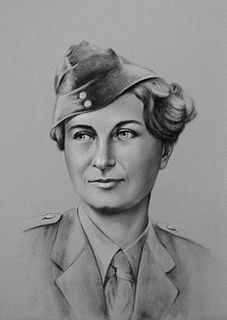 W
WSusan Mary Gillian Travers was an Englishwoman who served in the French Red Cross as a nurse and ambulance driver during the Second World War. She later became the only woman to be matriculated in the French Foreign Legion, having also served in French Indochina, during the First Indochina War.